
|
Quasars as tracers
|


|
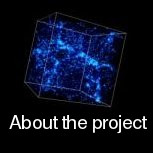
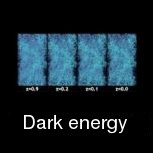

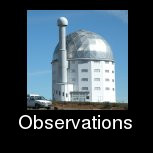
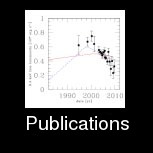
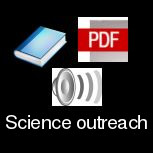
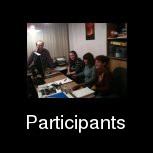

|
The history of the dark energy problemDark energy issue have made to the public in 2011, when Adam Riess, Brian Schmidt and Saul Perlmutter received the Noble price in physics for the discovery of the accelerating expansion of the Universe based on the observations of distant supernovae. Original paper were published in 1998. However, as usually, a great discovery does not appear oout of nowwhere, and the issue had already a long history, full of unexpected turns and rebranding. The year 1917 marks the first milestone. Albert Einstein introduces cosmological constant into his equations. In their original formulation, equations of general relativity have not contained such a term, and they implied the expansion or the contraction of the Universe. However, it was possible to add an additional term the the original equations without desroying the equations structure. This term had to have a very specific form, it contained a single arbitrary constant, and then it allowed to construct a static Universe. If we look at this term as a material source of gravity, this term corresponds to a positive energy density but a big negative pressure. Because in general relativity not only the energy density but also pressure contrubite to the total energy, the large negative pressure give the net effect of the negative total energy density, and this strange medium behaves in such way as it would have negative mass and performed gravitational repulstion instead of attraction. A few years later, in 20-ties, Wolfgang Pauli lead considerations of the vacuum properties. In quantum mechanics vacuum is not just nothing, but it is filled with virtual particles, and it radiates, so thus it has the energy. In Pauli's estimate this energy density was so enormous that it should prevent the gravitational attraction of the matter, because the gravitational interaction is so much weaker than the electromagnetic interaction. In 1931 in turn Einstein expressed his disappointment about the cosmological constant, and recognized the intruduction of this term into the general reklativity equations as his 'biggest mistake'. Edwin Hubble showed that the Universe is expanding, so it seemed that the cosmological term is not needed any more. However, in 60-ties this postponed idea started to come back, slowly. First, statistical analysis of quasar distribution showed unexpected high quasar density at the redshift about 2, and the simplest explanation was that the Universe did not expand originally as fast as now, and the Universe geometry at high redshifts was satisfactorily described by a flat model with cosmological constant. In 1967 Zeldowicz connected the concept of the cosmological constant with the concept of the vacuum fluctuations, and the cosmological constant gained a new interpretation. In 80-ties another dark thing in cosmology started to be generally accepted, namely the dark matter. Dark matter should not be confused with dark energy: dark matter has typical matter properties from the point of view of gravitational interaction, but it is not a barionic matter and therefore its existence and nature poses another challenge for physics and astronomy. Dark matter is required to stabilize/bind various systems, like clusters of galaxies and outer parts of galaxies. In cosmology, in turn, the theory of inflation started to be popular, as it explains in the natural way the surprising uniformity and flatness of the Universe. The next milestone came with observations of the cosmic microwave background by the COBE satellite. After just one year of the signal integration, G.F. Smooth and collaborators showed in their paper published in 1992 that the microwave background shows the predicted inhomogeneities. The power spectrum of these inhomogeneities is consistent with the predictions of the inflation theory and confirms that the Universe is flat. However, in order to have a flat geometry, the Universe has to be filled with matter up to the critical density. The known barionic matter is not enough, as can be seen directly from its emission as well as from the simulations of the primordial nucleosynthesis. This form of matter contributes only about 5 per cent of the critical density. Dark matter contribution is larger but not enough, and dark energy was requested. Later, Lev A. Kofman, Nickolay Y. Gnedin and Neta A. Bahcall, combining the data from COBE and from the galaxy surveys with galaxy proper motions showed in 1993 that the best representation of the Universe properties is the flat cosmological model with the cosmological constant of 0.3 - 0.4. In 90-ties, for cosmologists studying the formation of large structures in the Universe, like galaxies and galaxy clusters it became quite clear that only cosmological Lambda CDM models well represent the observational data, i.e. models has to contain the cosmological constant. An interesting example of this trend is a paper by Jerry Ostriker and collaborators from 1994, where they showed that only model with cosmological constant can explain the observed number of X-ray emitting clusters of galaxies. Such a model predicts the accelerated expansion at later stages of the evolution of the Universe. At this very moment the measurement of the Universe expansion based on distant supernovae appeared, marking the transition from complex indirect estimates to direct measurement, as a function of redshift. Measurements shown in the original papers which won the authors the Noble Prize were not yet very accurate but the data quality is rising with time. Therefore, instead of a rather constraining term 'cosmological constant' more general and flexible terms appear. A special model known under the name of 'quintessence' has been introduced, more general than the cosmological constant. In the case of the cosmological constant the pressure is equal to the energy, with a negative sngn, and in quintessence model there is an additional free parameter w: P = -w rho c^2. The catchy general name "dark energy" has been introduced in 1999 by Mike Turner. Methods of studying dark energy properties and the current state of knowledge Dark energy cannot be seen but its presence affects the behaviour of the radiating matter. In this way we can study the properties of the dark energy observationally, and this is the goal of astronomers' activity in this field. The challenge for physicists is to fing the interperation of the dark energy: to explain, what it really is. Dark energy is everywhere, but because it is seemingly distributed rather uniformly it is difficult to trace it in the places where the standard matter strongly dominates: in laboratiries, close to the Earth, in the Solar System, or even in the Milky Way itself. We have to go to the places where the standard matter is less abundant, which is true on average in the Universe. Co we have to reach to cosmological distances. This implies additional complication. Astronomy is like a combination of a geography with a history: the more distant objects we observe the younger Universe we study. There is also an advantage in this sutuation: deeper studies of the Universe reveil the changes of the relative importance of the dark energy with the age of the Universe. Any class of astronomical sources can be used for tracing the expansion of the Universe, if they are distant enough and bright enough to see them from large distances, and if we know how to interpret their properties. There are numerous possibilities nowadays, some of the succesfully applied, and some of them in their infancy. The basic idea is simple: we have to determine how sources with known true (absolute) luminosity or size change their appearance with distance. In a flat space non-expanding space, the size decreases linearly with distance and the luminosity drops down as a square of a distance. It is different in expanding Universe, and this is what we have to measure. Here is the list of currently used or considered possible methods of tracing the expansion of the Universe: - microwave background properties - barion acoustic oscillations, or more generally large scale structure of the Universe - weak gravitational lensing - Sunyaev-Zeldovich effect in clusters of galaxies - supernovae Ia - quasars - gamma-ray bursts In the case of the microwave background, we measure the size of the anisotropies in the Universe at the moment of the decoupling between the plasma and radiation, when the Universe started to be transparent for radiation, and the corresponding redshift is about 1000. Those anisotropies result from the small initial perturbations in otherwise almost uniform medium, which then lead to propagation of acoustic waves in the matter and in the radiation density. First detection of these anisotropies was done by a COBE satellite, but now we have much more precize measurements from the Plack satellite. These original oscillations left traces in the distrubution of matter out of which the galaxies formed at a later stage, and this trace - barion acoustic oscillations - have already been identified in the distribution of galaxies. In this method we thus also measure the sizes of structures, but closer in, at redshifts about 1. In general, the evolution of perturbation and formation of galaxy network depends significantly on the expansion rate of the Universe. Weak lensing method in turn uses the fact that the light rays undergo gravitational attraction and bend in the gravitational field. This leads to image distorsion for distant galaxies. The net effect strongly depends on the mass distribution along the line of sight, so is equally sensitive to the history of the Universe expansion as the large scale structure studies. The Zeldovich-Sunyaev effect in clusters of galaxies, by a combination od measurements of the microwave background and X-ray emission aloows to determine sizez of galactic clusters and using that to determine the dark energy. In the case of supernovae, as well as for quasars, we measure the observed object luminosities, the redshift, and the absolute object luminosities. The most difficult part is to establish the absolute luminosity. In the case of SN, we use the fact that all SN must have the same absolute luminosity, after appropriate rescaling based on the supernova duration and the morphological type of the host galaxy. In this sence we say that SN are "standard candles". The determination of the absolute luminosity of a given quasar and the subsequent use of quasars as dark matter tracers is tested within this project, and we describe it separately, in more detail. Gamma-ray burst are also a promissing sources for cosmological use, but the method is new and needs still a lot of theoretical work. The best limitations are usually obtained by combining results comming from different methods. Most cited papers on dark energy Riess et al., 2004, "Type Ia Supernova Discoveries at z > 1 from the Hubble Space Telescope: Evidence for Past Deceleration and Constraints on Dark Energy Evolution", paper Peebles, P. J.; Ratra, Bharat, 2003, "The cosmological constant and dark energy", paper Copeland, Edmund J.; Sami, M.; Tsujikawa, Shinji, 2006, "Dynamics of Dark Energy", paper Riess et al., 2007, "New Hubble Space Telescope Discoveries of Type Ia Supernovae at z >= 1: Narrowing Constraints on the Early Behavior of Dark Energy", paper Wood-Vasey et al., 2007, "Observational Constraints on the Nature of Dark Energy: First Cosmological Results from the ESSENCE Supernova Survey", paper Frieman, Joshua A.; Turner, Michael S.; Huterer, Dragan, 2008, "Dark Energy and the Accelerating Universe", paper |
© 2013 Bożena Czerny
Project financed by Fundation for Polish Science
Design: Krzysztof Czart, SALT photo: : Wojtek Pych

